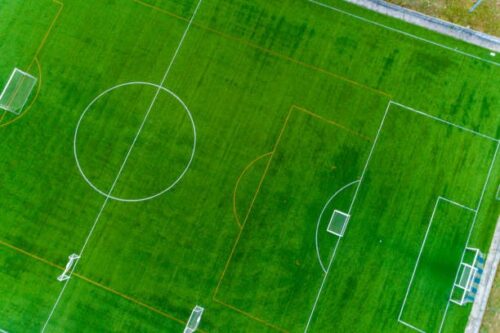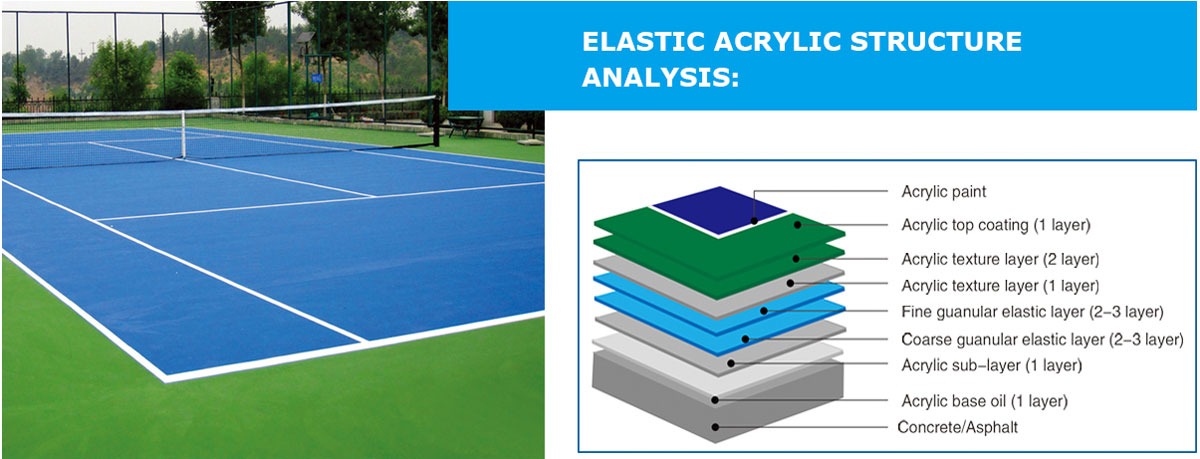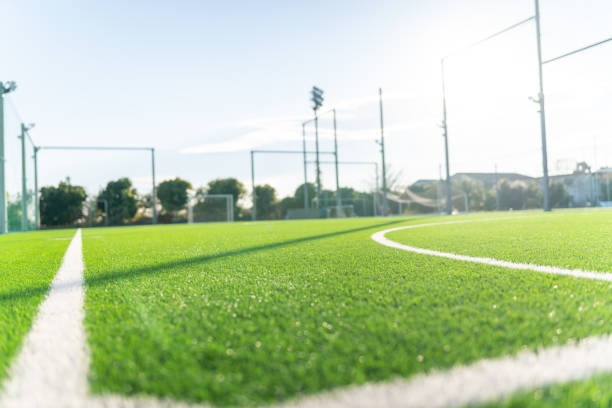
Artificial Turf in Football Pitches: Advantages and Characteristics
The use of artificial turf for football began in football pitches in the mid-twentieth century, and since then it has become the preferred choice for many clubs and sports federations worldwide.
Advantages of Using Artificial Turf in Football Pitches
The preference for artificial turf for football is due to the many advantages it offers, most notably:
-
Usability in all weather conditions: for football is resistant to harsh weather conditions, whether extreme heat or frost, making it ideal for pitches in areas with extreme climates.
-
Safety: for football provides a safer surface for players, significantly reducing the risk of sprains and muscle strains during play.
-
Comfort: for football offers players a softer and more comfortable surface underfoot, which improves their performance and increases the enjoyment of the game.
-
Cost: for football is more cost-effective in the long run compared to natural grass, especially regarding construction and routine maintenance costs.
-
Ease of maintenance: for football does not require regular watering, fertilization, or mowing, and it has high resistance to diseases and pests that can affect natural grass.
-
Sustainability: for football has a much longer lifespan than natural grass, reducing the need for frequent pitch reconstruction, thus promoting sustainability.
Specifications of Artificial Used in Football Pitches:
The specifications of turf for football used in pitches vary according to the standards adopted in each country, but there are some basic specifications that are adhered to globally:
-
Type of yarn/fibers used: for football is often manufactured using polypropylene or polyethylene fibers due to their durability and resistance.
-
Pile height/fiber height: The ideal height for artificial fibers in football pitches typically ranges between 50 and 60 mm to achieve a balance between stability and ball speed.
-
Pile density/fiber density: The density of artificial fibers in artificial turf for football must be high enough to provide good friction and prevent players from slipping during movement.
-
Resistance to weather conditions: It is essential that the artificial fibers used in artificial turf for football are resistant to wear and tear resulting from continuous use and various weather conditions.
Maintenance for turf Used in Football Pitches
To maintain the quality and safety for football, regular maintenance is required, which includes the following:
Cleaning the pitch: The surface of the pitch should be cleaned regularly using a specialized brush to remove accumulated dust, debris, and dirt.
-
Regular inspection: The pitch should be inspected periodically to ensure there is no damage or tearing in the artificial turf for football.
-
Preventive maintenance: It is preferable to carry out regular preventive maintenance to help prevent potential damage and extend the lifespan of the pitch.


